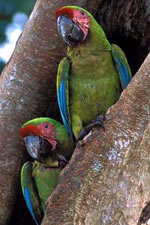Read the following report, courtesy of Journey South:
Rocio Treviño reports from Saltillo, Coahulia, Mexico:
All week the monarchs have astonished us during their passage over Saltillo, Coahuila. People say they have not seen the monarchs so numerous in years. The monarchs have formed clusters throughout the city of Saltillo. By about 9:00 every morning, as soon as the sun warms the air to 15°-17° C (59° -62° F), the monarchs begin to fly from the trees where they clustered in parks, near houses, schools, and streams across the city. Hundreds and hundreds of monarch butterflies, spiraling upward in thermals, sometimes so numerous they are difficult to count. I am sending the photos that my 10 year-old granddaughter took in a park to the north of town. Today I continued to see dozens of butterflies rising in the thermals. The butterflies must already be in the state of San Luis Potosí in great numbers, but I have still not received reports. And where is the migration near the coast to the east? My son, Rogelio, was near Victoria, Tamaulipas, on Friday, Saturday and Sunday and told me he did not see any butterflies...








